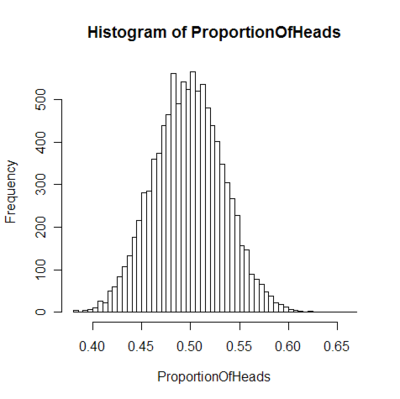Earlier today, I blogged on both the issues of Limit of Detection (LOD) and Limit of Quantification (LOQ) error in the context of Pennsylvania underage drinking and/or Pennsylvania underage drinking and driving charges. So, it only makes sense to look at the other extreme….
In the December 28, 2009 Rapid City Journal, an newspaper article reported that a woman from South Dakota was allegedly driving with a BAC of .708.

As everyone is blogging about this report as a singular event, it needs to be analyzed-empirically.
Facts first:
I am fortunate in the sense that I have great colleagues and true friends in every state of the United States who like us here defend the citizen accused of a DUI. Through corresponding with one of my colleagues, Brad A. Schreiber of Pierre, SD, (who in my estimation is the best in his state at DUI defense), I was able to remove some of the speculation and have been able to distill it down so that it can be meaningfully analyzed.
- South Dakota uses blood sampling for ETOH analysis for Blood Alcohol Content;
- In terms of collection, the protocol calls for a single tube to be collected as opposed to the forensically and analytical chemistry standard method of collecting two separate tubes from the same venipunture site;
- As such, the simple act of subsequent analysis by the lab of the single tube, as it is a totally destructive act, makes it impossible for future true independent testing by the accused or anyone to independently verify the results;
- The tube that the government provides for BAC collection has a forensically insufficient amount of sodium flouride (the tube’s anti-glycotic agent) which is designed to inhibit exogenous alcohol production;
- The analytical device is setup as a dual detector Gas Chromatograph where the two detectors are a Flame Ionization Detector (FID) and a Mass Spectrometer (MS);
- The specific setup of the MS is unknown;
- A headspace injection technique is used and is not a direct injection;
- It is not a split (dual) column analytical device configuration;
- The type of column used is unknown meaning whether it is a capillary or packed column;
- The specific type of column used meaning if it is a BAC-1, a BAC-2 or DB-5 is also unknown;
- In terms of the method of analysis, a single injection is made testing the sample only one time using the above analytical device setup;
Although there are some unknowns above, we can start to examine the propriety of the reported result, to be critical, to be skeptical, to be in one word: scientific.

In other more simple words: "Look for Shenanigans"
The analysis needs to be examined from a sheer probability theory point of view, the pharmacology point of view and finally from an analytical chemistry point of view.
First the Probability theory point of view… (and first some background)
Probability theory is the branch of mathematics concerned with analysis of random phenomena. So in his case, as it is random that this would occur in the world, the mathematician would want to try to quantify, if possible, the likelihood of this occurrence.
Someone likened the odds of this .708 reported BAC as being accurate, precise, actual and true to be like "hitting the lottery" in statistics. But is it?
In basic theory, the attempted quantification in probability theory can be thought of like trying to quantify the possibility of the result of heads versus tails when flipping a coin…

However, unlike the binary concept of either heads or tails, the lottery is different.
From the pharmacology point of view, the reported lethal dose level for EOTH consumption for 50 percent of the population (LD50) is reported to be around .40 BAC. So, this alleged result is nearly twice the LD50 rate. That is statistically remarkable. Well over 50% of the population would be dead (probably in the orders of magnitude of 90+%).
What we should refer to in he examination of this lottery analogy is the issue of random match probability error otherwise illustrated as the “Birthday problem”.
In probability theory, the birthday problem, or birthday paradox pertains to the probability that in a set of randomly chosen people some pair of them will have the same birthday (matching criteria=when only month and day is examined—not including year, hour or second). In a group of at least 23 randomly chosen people, there is more than 50% probability that some pair of them will have the same birthday. Such a result (for just 23 people, considering that there are 365 possible birthdays) is counter-intuitive to many.
For 57 or more people, the probability is more than 99%, and it reaches 100% when the number of people reaches 366 (by the pigeonhole principle, ignoring leap years). The mathematics behind this problem led to a well-known cryptographic attack called the birthday attack.
Let’s make it more concrete….
In DNA analysis, the problem comes when one tries to do base pairing and what your criteria is for a “match”. What is your method of analysis: STR versus LCN (which is really scary)? How many base pairs versus all possible base pairs? Most forensic labs are laughably low.
Think of the Birthday problem. If you change the “matching criteria” from the birthday (when only month and year is examined—not including year, hour or second) and you switch it to a more meaningful metric such as month, day, year, hour and second, then the chances of finding a match in a room substantially and radically changes.
Dr. Jason Gilder is perhaps the most published person when it comes to this in the area of applied metrology and DNA forensics (thanks to Ted Vosk for introducing him to me and Dr. Greg Hampikian for first exposing me to this issue).
But in the world of variable change (i.e, the real world), the answer is not as concrete and must be examined from the singularity of the possible event in that instant moment in time. This is where it is very right when there are nearly unlimited variables, the observation holds very true that despite the odds, people hit the lottery all the time and is an apt analogy.
It is the population density of the studied university that controls and the definition of the matching criterion.
Finally from the Analytical Science point of view…
If we are going to examine this event with virtually no meaningful data (no chromatogram, no total ion chromatogram, no demonstration of separation between like chemical isomers, no calibration curve, etc.) and conclude for the sake of the argument that it is a valid outside extreme outlier (a true artifact or the player hit the lottery) and hence a freakish event, sometimes Occam’s Razor controls.
It is likely exogenous alcohol production due to pre-collection error or post-collection but pre-analytical error. Canidida albican. (I will blog on this later)
So what?
Here is the point from the analytical chemistry point of view….
Assuming this single test using a protocol and the analytical method and device setup described above and it was not diluted, then corrected for dilution (as would be more acceptable to do)….
- At that high of a result, I don’t know of any GC-FID protocol that has a calibrator that goes that high, do you? My state doesn’t. Perkin Elmer and Agilent Standard Operating Procedures for BAC-1 and BAC-2 capillary columns doesn’t.
- As such, as linearity cannot be demonstrated to conclude that it was in fact that high of a result, it cannot be responsibly scientifically stated or concluded that it was a .708 BAC. THe only acceptable and scientifically responsible report is just that the result obtained exceeds the highest known calibrator value.
- With that high of a result without there being a blank between it and the next tests, then I would pity the poor fool who was next in the carousel of ETOH samples that are run through the GC as the possibility of carry-over effect must be present.
So, with all of the above, I call Shenanigans on the .708.
-Justin J. McShane, Esquire, Pennsylvania DUI Attorney
I am the highest rated DUI Attorney in PA as Rated by Avvo.com
You can follow me on Twitter, Facebook or Linkedin

Board Certified Criminal Trial Advocate
By the National Board of Trial Advocacy
A Pennsylvania Supreme Court Approved Agency
Kevin Anderson says:
You are one scary smart guy. Thank God you are my attorney and not my prosecutor.
Erik Brown says:
We certainly need to look at extreme BAC levels like this closely. But 0.708 isn’t that outlandish. The record in the United States is 0.72 (Oregon), before that it was 0.69 in Indiana. In all three of these cases the person was unconscious behind the wheel.
All reported information is unclear on where the blood in this latest case was analyzed. If it was in a crime lab, that used whole blood analysis by GC, then it is on par with the previous world record in Bulgaria (0.914). If it was analyzed in a hospital (most likely, just like the other US records), then we are really comparing apples to oranges.
Hospitals report results as a serum level, not whole blood. When one compensates for the difference between serum and whole blood, it would put this 0.708 between a 0.60 and a 0.55. Applying the same factor to the 0.914 Bulgarian record the range is 0.78 to 0.71.
As far as alcohol neo-genesis (fermentation of sugars in the blood sample turning into ethanol), the likelihood this level could be obtained in unadulterated human blood is so remote, it can be written off as a practical impossibility.
One additional factor to consider (if the sample was analyzed in a crime lab as whole blood) is the linearity of their analytical system. Most labs are calibrated to report results from somewhere around a 0.02 to a 0.40 BAC level. It is extremely poor laboratory practice to report results that fall outside the calibration range of the instrument. In most regulated sciences it is simply not allowed, but as we know forensic science is unregulated and each lab gets to set their own standards and procedures without much oversight. If a crime lab reported this level, unless they did some dilution, it is highly unlikely the reported results would be considered valid. The only laboratory I know of that routinely reports results that fall outside their calibration range is the Arizona Department of Public Safety crime lab. They do so because they just simply are too ignorant of good scientific practices to know that any result they report above their high calibrator (0.30) is simply invalid.